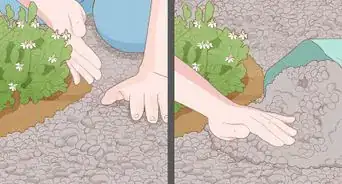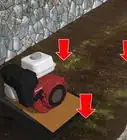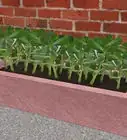This article was co-authored by Steve Masley. Steve Masley has been designing and maintaining organic vegetable gardens in the San Francisco Bay Area for over 30 years. He is an Organic Gardening Consultant and Founder of Grow-It-Organically, a website that teaches clients and students the ins and outs of organic vegetable gardening. In 2007 and 2008, Steve taught the Local Sustainable Agriculture Field Practicum at Stanford University.
There are 8 references cited in this article, which can be found at the bottom of the page.
This article has been viewed 40,780 times.
There are multiple different ways that you can make money growing vegetables. For instance, you may have a small plot of land and want to sell produce directly to your customers through roadside stands, farmers markets, and community-supported agriculture. For the environmentally conscious, there are opportunities to establish a farm-to-table business by selling your products directly to local restaurants, grocery stores, and markets. Regardless of how you decide to sell your vegetables you must create a productive vegetable garden.
Steps
Establishing a Productive Vegetable Garden
-
1Plant your vegetables in raised garden beds. If you want to have a higher yield from your garden, you should grow crops in raised garden beds. Raised gardens can produce up to 4 times as much as a standard garden, and are perfect for those looking to make money off of their vegetable garden. This is because the soil is deep, loose, and fertile. Raised beds also allow you to plant more vegetables in a smaller area because you don’t have to leave room for walking paths.
- You can purchase the supplies necessary to make a raised garden bed at a garden supply store. Typically raised beds are sold in kits and can be semi-complete (ie supply aluminum siding, but you provide the lumber), or complete kits which come in cedar, composite wood, recycled plastic, etc. Instructions on how to construct the bed will be included in the kit.[1]
- Raised beds range in depth, starting at around 6 inches. Generally, the deeper the bed the better and fuller the plants will grow. If you plan to put a raised garden bed on concrete, you should look to get a deep bed no less than 10-12 inches.[2]
-
2Pay attention to spacing. Avoid planting vegetables in rows or square patterns. Instead, try staggering your plants by planting them in triangles. This strategy will allow you to grow 10-14% more plants. That being said, you should not plant them too close together because this could cause the plant to stagnate in growth and not reach its full size and diminish its yield.
- Research the vegetables you are planning to grow and make sure you space them far enough apart to gain the maximum yield.[3]
- Read the seed packets. They will give specific information regarding planting and spacing.[4]
EXPERT TIPSteve Masley has been designing and maintaining organic vegetable gardens in the San Francisco Bay Area for over 30 years. He is an Organic Gardening Consultant and Founder of Grow-It-Organically, a website that teaches clients and students the ins and outs of organic vegetable gardening. In 2007 and 2008, Steve taught the Local Sustainable Agriculture Field Practicum at Stanford University.Home & Garden Specialist
 Steve Masley
Steve Masley
Home & Garden SpecialistThe best way to learn is hands-on experience. Steve Masley from Grow it Organically, a gardening business in California, says: "I started working on a garden in the first place I moved into in California, but it was just a little patch of dirt. Then, we moved into a place where there was a plot that we developed for gardening. We learned most of our skills just by having this huge garden to take care of."
Advertisement -
3Grow compatible crops together. Some plants grow best when planted near other crops. For example, corn, beans, and squash are considered compatible crops because the corn stalks help to support pole beans and the squash can grow underneath the corn which provides shade and prevents the spread of weeds.
- Other compatible crops include tomato, basil, and onion.
-
4Water regularly. Make sure that your vegetable plants do not dry out. You should try to water deeply and then allow them to partially dry, before watering again.[5]
- Inconsistent watering can reduce yields in most vegetables and certain vegetables, such as cucumber and lettuce, will taste bitter.
- The best way to water a vegetable garden is by installing a drip irrigation system and setting it on a timer so that plants get water at the same time each day.
-
5Weed the garden frequently. Weeds will compete with your vegetable plants for water, sunlight, and space. If you want to have a productive garden it is a good idea to eliminate all weeds as they appear. This will leave more room for your vegetable plants to grow![6]
- In the early spring, while vegetable plants are still small, you should weed the garden about once per week.[7]
- By the height of the summer you will not need to weed as frequently. It is a good idea to check in on your vegetable garden daily and pull out weeds as they appear.
- Weeds are easiest to pull out when they are still relatively small, making it important to monitor your garden for weeds on a regular basis.
Selling Vegetables Directly to the Customer
-
1Choose the right farmer's market. One way to make money from growing vegetables is to sell your produce directly to your customers at a local farmer’s market. It is a good idea to shop around to multiple different markets the year before you want to begin selling. This way you can find a market that gets a lot of customers and is in need of more vendors. You should also speak with the people running the market in order to find out what the application process is and what you need to do in order to be eligible to sell at the market. These rules will vary between markets so it is important you talk with people and make connections.[8]
- Each farmer’s market also has a different vibe. For example, some markets cater to busy shoppers who are in a rush and others develop a community vibe with music and games for kids and families.
- Choose a market that works for you!
-
2Sell your veggies at a farmer's market. Once you have selected a suitable farmer's market, you will need to plan out your booth in order to ensure that your produce sells. There are a number of different things that you can do to attract customers to your booth and develop relationships with your customers. This will help to encourage customers to return to your booth each week:
- Start small: when you first start selling at a market don’t have too much produce or invest in a large tent. You want to test the market and find out how much you will need before spending a lot on decorations.
- Display your vegetables in groups to make blocks of colour: For example, bright vegetables, such as bell peppers, catch the customer’s eye and should be placed together.
- Design your stand: Make signs to name and price all of your crops. Drape a colourful table cloth over your table in order to make the display more visually appealing and to hide stored items under the table.[9]
- Hand out recipes that use your produce.
- Find your niche: Sometimes it helps to specialize in a specific product, for example, varieties of garlic, or package your vegetables in a unique way (ie wicker baskets). [10]
- Connect with the customers: Be friendly to your customers. Tell them stories about how your products are farmed, and show pictures of the farm in order to connect them to the growing process.[11]
-
3Set up a roadside vegetable stand. If your farm is located on a fairly busy road in the country you may want to try selling vegetables at a roadside stand. By selling at a roadside stand you can save on transportation costs and sell vegetables immediately after being harvested. Familiarize yourself with any government regulations surrounding the sale of fruits and vegetables at a roadside stand. Try these tips for making your roadside vegetable stand profitable:
- Make sure that your stand is visible to cars as the drive by.
- Ensure that there is a space for cars to pull over and park at the side of the road
- Situate your stand near your garden so that customers can actually see the vegetables growing.
- Decorate your stand with flowers, well labelled products, and garden tools.
- You can sell produce with blemishes at a discounted price. It is often difficult to sell vegetables with minor blemishes at a farmer’s market. At a roadside stand, however, you could have a discount bin. This is a great way to make some money off of vegetables that are more difficult to sell.[12]
- Staff the roadside stand with a family member or consider a self serve stand in order to save on costs.[13]
-
4Have customers pick their own vegetables. Some customers will want the ability to pick their own vegetables. This type of farm is called a “you pick” field and is ideal for people who want to buy vegetables in bulk (ie people who can vegetables or make sauces and jams). Before you set up a “you pick” farm make sure that you have contacted your local governing body to see if there are any regulations associated with this style of farming. For example, you may need to provide onsite washrooms and hand washing stations for your customers.
- Try opening a pick your own pumpkin patch during the fall season to attract families and increase sales.
- This type of selling can help you save on labour costs as the customer actively harvests their own produce, however, you will want to demonstrate how to pick the vegetables so that the customers do not damage your plants.
- Make sure there is ample parking and signage for your customers.[14]
-
5Engage in community supported agriculture. Community supported agriculture (CSA) is a term used to describe when a customer purchases a season long subscription to a farm. Each week they receive freshly harvested vegetables that are delivered to a specific pick up location or they come directly to the farm to pick up their share of the crop. This type of marketing allows a farmer to receive payment upfront and encourages community member to buy local produce.
- Try advertising your CSA at a local farmer’s market in order to gain customers.
- Produce a weekly newsletter to describe the vegetables your customers will receive each week. You can provide them with information about growing crops, and how to incorporate the fresh crops into their meals.
- Give customers recipe cards that will provide them with examples of how to prepare and cook the vegetables each week.
Making Money by Selling Products to Stores and Restaurants
-
1Sell your produce to a cooperative or grocery store. If you have a large scale production farm you can sell your produce wholesale to a cooperative or grocery store. This is a great option for farms that are located far from the consumer market. For example, your farm may be located in a very rural area with little tourist or drive by traffic. Developing a wholesale sales approach with a grocery store or cooperative will allow you to focus primarily on running the farm and will leave the individual sales to a third party.
- This is an excellent option if you are not comfortable communicating and networking with customers.
-
2Build a relationship with a local chef. Network with chefs and local restaurants and see if they are interested in purchasing fresh produce for their business. Many restaurant owners are interested in saving money on food transportation costs. By working closely with small farmers in the area, they can save money and make sure that they are serving fresh and local food.[15]
- Allow the chef or restaurant owner to taste and try your vegetables so that they know they will be getting a quality product.
- Invite them to tour the farm so that they can see how the vegetables are grown and understand what types of chemicals, if any, are used in the growing process.
- Ask the chef what type of produce they would be interested in purchasing and see if you can accommodate their requests.
-
3Sell jams, jellies, and baked goods made with vegetables from your garden. Many local shops and markets will sell homemade foods made with local products and ingredients. Check your state cottage food laws to see what the regulations are regarding selling your own jams, jellies, and baked goods.
- Check out this website for information on laws in your state: http://forrager.com/laws/
Community Q&A
-
QuestionHow exactly would I get my produce to the grocery store?
 Community AnswerTalk to the manager of the store and see if you can make a deal to be one of their produce suppliers. If you can't make a deal with any grocery stores, you can always set up a stand at your local farmer's market.
Community AnswerTalk to the manager of the store and see if you can make a deal to be one of their produce suppliers. If you can't make a deal with any grocery stores, you can always set up a stand at your local farmer's market.
Warnings
- Make sure that there aren't any bugs on your produce, or people may not want to buy them.⧼thumbs_response⧽
References
- ↑ http://www.gardeners.com/how-to/raised-bed-basics/8565.html
- ↑ http://www.gardeners.com/how-to/raised-bed-basics/8565.html
- ↑ http://www.i4at.org/lib2/howgardn.htm
- ↑ https://www.bayeradvanced.com/articles/10-steps-to-growing-a-productive-vegetable-garden
- ↑ https://www.bayeradvanced.com/articles/10-steps-to-growing-a-productive-vegetable-garden
- ↑ https://www.bayeradvanced.com/articles/10-steps-to-growing-a-productive-vegetable-garden
- ↑ http://www.gardeners.com/how-to/raised-bed-basics/8565.html
- ↑ http://www.hobbyfarms.com/8-tips-for-beginner-farmers-market-vendors-4/
- ↑ http://www.hobbyfarms.com/8-tips-for-beginner-farmers-market-vendors-4/
- ↑ http://www.hobbyfarms.com/8-tips-for-beginner-farmers-market-vendors-4/
- ↑ http://www.hobbyfarms.com/8-tips-for-beginner-farmers-market-vendors-4/
- ↑ http://www.highmowingseeds.com/blog/the-roadside-stand-advantage-is-it-right-for-you/
- ↑ http://www.highmowingseeds.com/blog/the-roadside-stand-advantage-is-it-right-for-you/
- ↑ http://www.naturalresources.msstate.edu/business/u-pick-farms.asp
- ↑ https://www.theguardian.com/money/2013/jul/26/making-money-allotment-gardeners

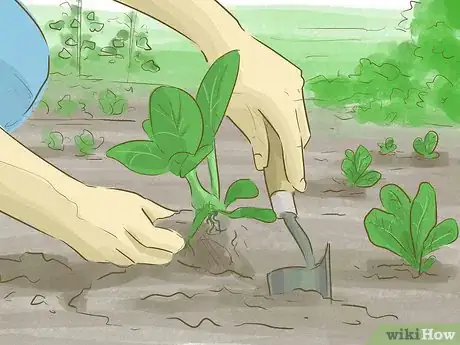
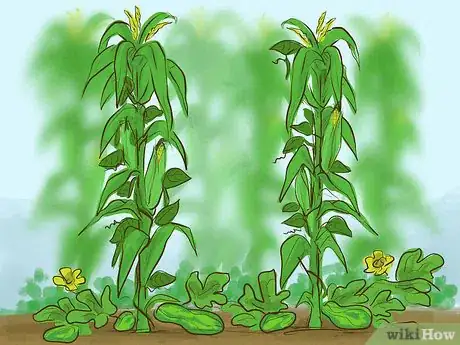


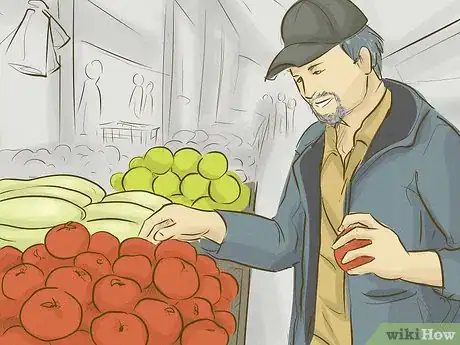
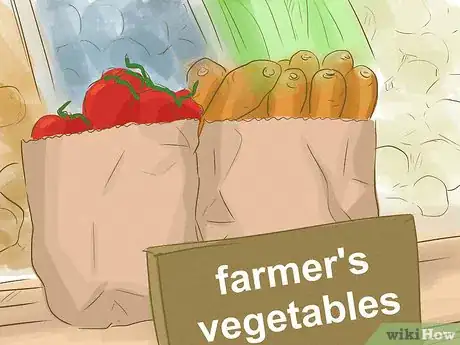

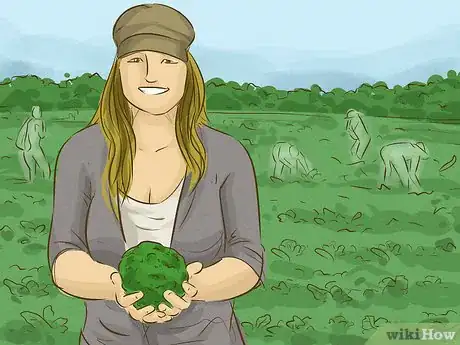
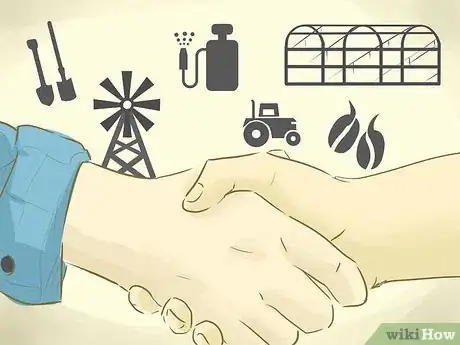
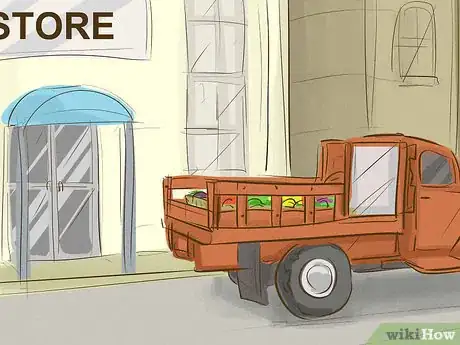

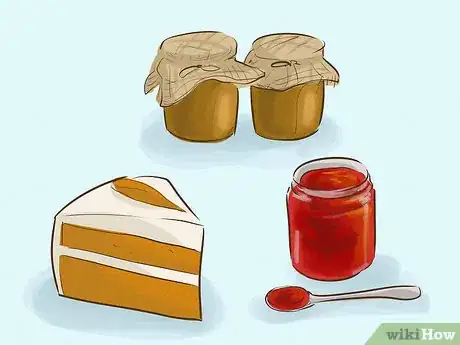

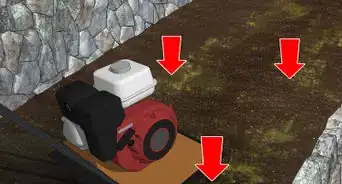
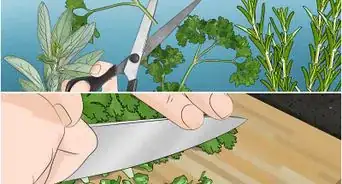


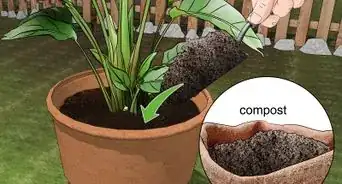
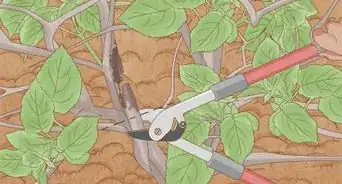

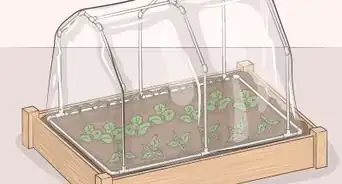
-Oven-Step-15.webp)


